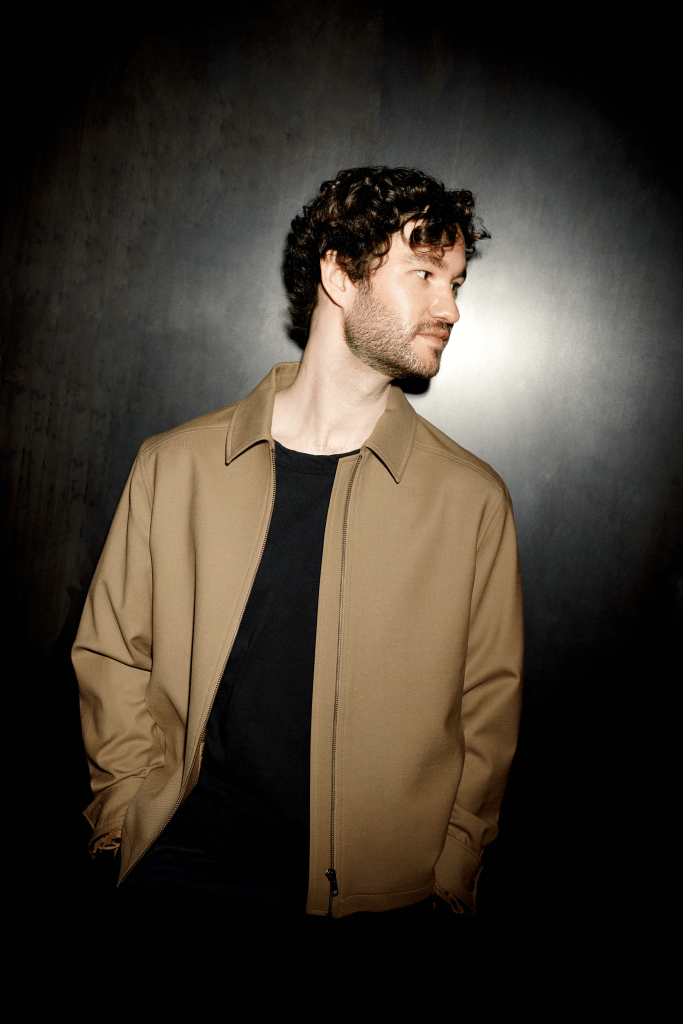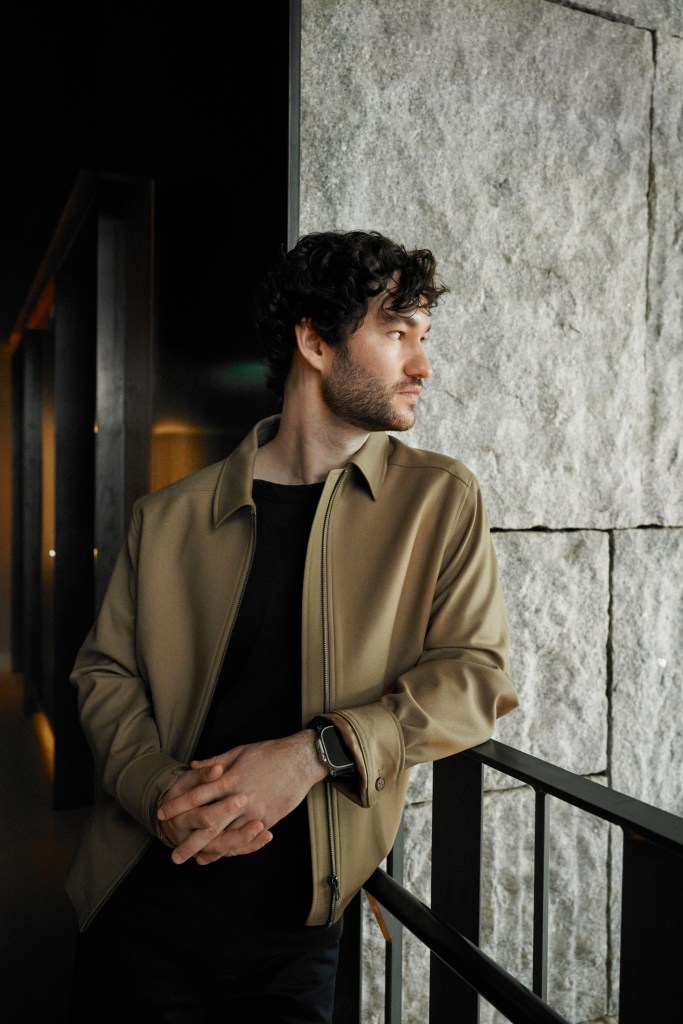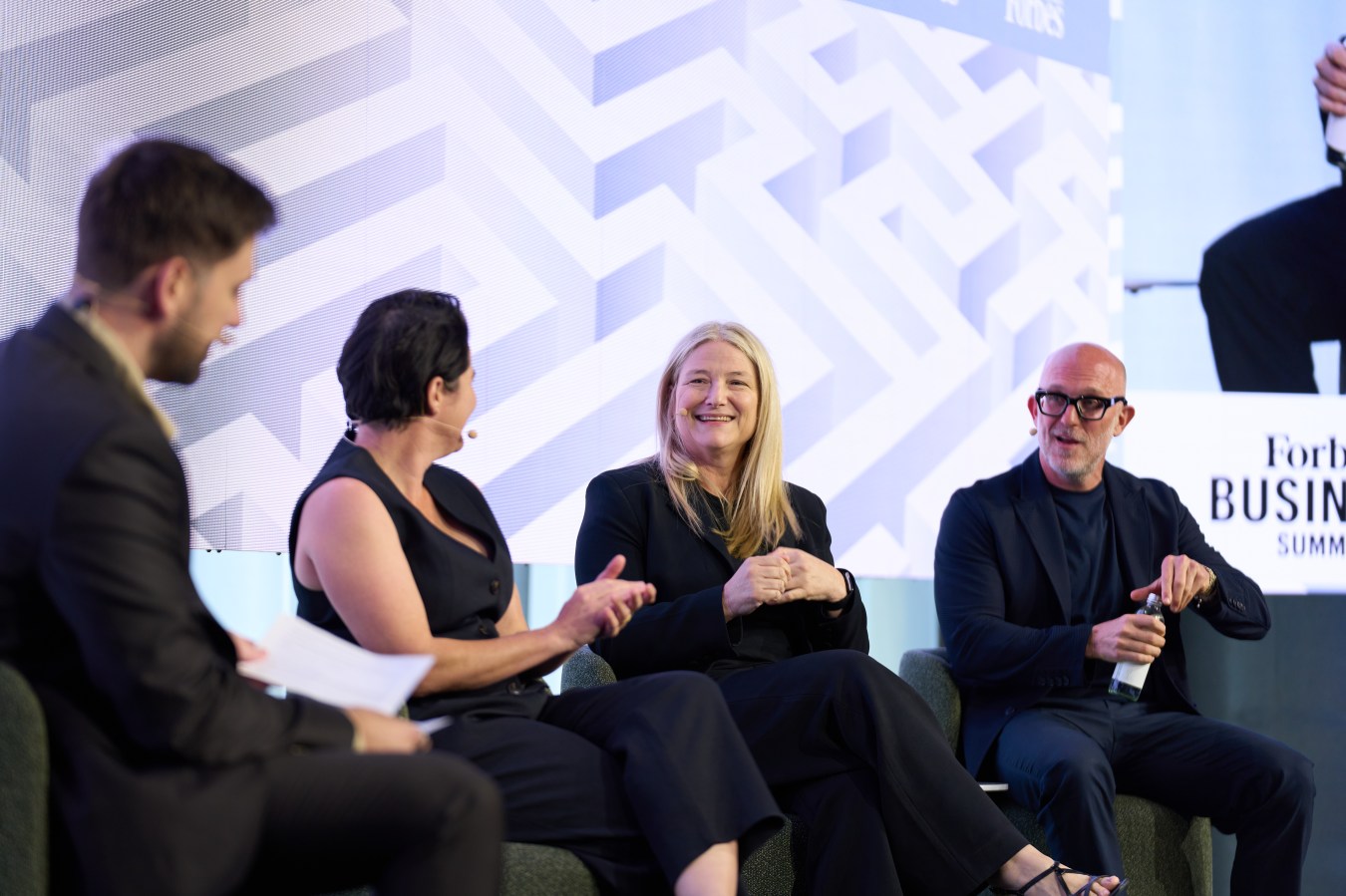Jarrod Webb turned his passion for building apps into Blinq, ushering business cards into the digital era. His startup now is used by millions worldwide and recently secured $38 million in one of the country’s biggest Series A rounds this year.
‘Fresh Faces’ is featured in Issue 18 of Forbes Australia. Tap here to secure your copy.

For over 400 years, the business card has operated as the silent currency of the corporate world – a universal handshake that has paved the way to countless partnerships and ventures.
However, despite their tradition, the flimsy slips of paper have struggled to keep pace with the modern world.
“Business cards are super inefficient,” says Webb. “You can’t change your information on them, you have to carry stacks around, and once people have them, there’s not enough detail to help them remember who you are.”
In 2017, the then-Uber Eats software engineer spotted a golden opportunity to bring business cards into the digital era. Frustrated by outdated networking rituals and lost connections, Webb began laying the groundwork for what would eventually become Blinq.
Reinventing the Business Card
Eight years on, Webb finds himself at the helm of a $200 million platform used by nearly 3 million people across 189 countries. But the idea behind the company remains remarkably simple. “It’s just about connecting people and helping them move forward, unlocking opportunities that might never have existed otherwise,” he says.

At its core, the Melbourne-founded start-up offers a digital alternative to paper business cards, providing users with dynamic profiles that can be shared via QR code, NFC tap, or web link.
Unlike traditional business cards, Blinq profiles stay up to date in real time and automatically update in recipients’ address books. Users can also add notes to each contact, making it easy to remember when and where they met someone.
“I think Blinq is really about a fully digital solution,” Webb adds. “Why carry a card when your phone can handle the sharing? It just makes everything far more efficient.”
That commitment to efficiency is what Webb believes has fuelled the company’s rapid growth. Crucially, Blinq does not require the recipient to have the app installed. Users can instantly save the contact details of the person they just met and are then prompted to download Blinq to create their own digital card.
“That’s really what’s driven the viral loop behind the product,” Webb explains. “You can be at a networking event, share your card with someone, and they can instantly download the app and start using it at the same event.”
Beyond efficiency, Blinq’s versatility has driven its widespread adoption, helping it secure users at more than 93 per cent of Fortune 500 companies.
“Users can customise exactly what details they share, which makes it a very horizontal product,” Webb says. “It’s designed to fit into any situation where people want to build meaningful connections, which is ultimately what business is all about.”
A Coder’s Dream
Growing up, Webb was fascinated by the power of technology to simplify everyday life. “I’ve always been interested in building mobile utility apps,” he says. “There’s some real magic you can unlock in life when you build something that people actually use.”
“Some people spend their evenings gaming or watching TV shows, but for me, it was about building apps.”
Blinq founder & CEO, Jarrod Webb
That same drive followed him into his professional career, when a chance encounter sparked the idea for his biggest project yet.
“I was chatting with someone on the train back in 2017 when I was handed a business card with a QR code on it,” he recalls. “I had to download an app just to scan it, and even then, the contact ended up lost in my phone. It all felt so clunky and inefficient.”
Later that year, Apple released iOS 11, enabling iPhones to scan QR codes directly from the native camera. The seemingly small update struck Webb as a major unlock for digital networking.
“It seemed obvious to me that a digital business card could work in that environment because you wouldn’t need a separate QR app, and you could make that first exchange of details feel seamless and memorable,” he explains.
Over the next two days, Webb manually coded the first version of what would become Blinq. He would continue refining the program while working full-time at Uber Eats.
“Coding late at night never felt like a chore,” Webb reflects. “Some people spend their evenings gaming or watching TV shows, but for me, it was about building apps. I’d be coding from 10 pm to 2 am most nights, and on weekends I’d head to cafés near where I lived and code all day.”
“It didn’t get a lot of traction at first,” he adds. “But once Android phones could scan QR codes natively, and then COVID got everyone comfortable with the whole scanning experience, the idea took off.”

By the time Blinq had around 6,000 users and its first paying business customers, Webb decided it was time to leave his job and take the plunge into building the company full-time.
“I had enough people using the product that I believed it was a good enough idea. So I gave it a crack and I’m happy I did.”
The Road Ahead
Today, Blinq has a team of 80 employees across offices in Melbourne, Sydney, San Francisco, and New York. Earlier this year, the company closed a $38 million Series A round led by Touring Capital, bringing its total funding to more than $43 million from backers including Blackbird, Square Peg, and HubSpot Ventures. But for Webb, this is only the beginning.
“Blinq started as a digital business card, but what’s exciting is that if you own that first connection between two people, you can help with everything that happens next.”
He envisions Blinq evolving into a platform that goes far beyond simply exchanging contact details. For Webb, the future lies in maintaining and nurturing connections so that every new contact has a genuine possibility of going somewhere meaningful.
“If you can increase the surface area for luck between two people, you might help create the next big company, land someone their dream job, or spark a connection that changes a life,” he says. “That’s the future I see for Blinq.”
Look back on the week that was with hand-picked articles from Australia and around the world. Sign up to the Forbes Australia newsletter here or become a member here.



